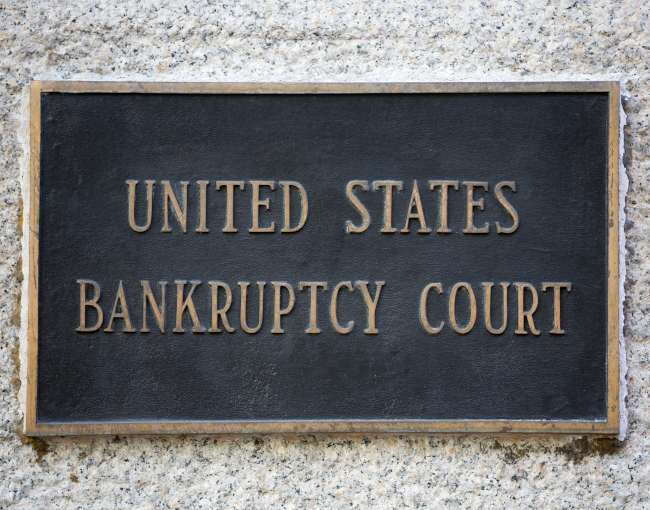In a recent opinion, the Court of Appeals for the Seventh Circuit ruled the City of Chicago must return repossessed and impounded vehicles upon receiving a bankruptcy petition, or run the risk of violating the automatic stay under Section 362 of the Bankruptcy Code.
Background
In In re Fulton, which was consolidated with three other appeals brought by the City of Chicago (In re Howard, In re Peake, and In re Shannon), the issue was whether the City could continue to hold onto a debtor’s vehicle post-bankruptcy filing when the vehicle was repossessed and impounded pre-bankruptcy, in order to attempt to collect outstanding parking tickets and other fines. In each case, the debtor filed a petition for relief under Chapter 13, demanded return of the vehicle and the City of Chicago refused to return the vehicle.
The main issue in each of the cases was whether the City was entitled to continue to hold the vehicle until the debtor paid the fines, or until the debtor obtained a court order requiring the City to return the vehicle to the debtor.
When an individual or business files a bankruptcy petition, the “automatic stay” operates as an injunction against all collection activity against the debtor, under Section 363(a)(3) of the Bankruptcy Code. The stay also prohibits all entities from taking an “act to obtain possession of property of the estate or to exercise control over property of the estate.” The court in Fulton emphasized that it was relying on their precedent and the similar factual situation of Thompson v. General Motors Acceptance Corp., where the court held that a creditor must comply with the automatic stay and return a debtor’s repossessed vehicle upon her filing of a bankruptcy petition.
The court’s decision
The court noted it is established law that the debtor retains an interest in the property after repossession. Congress amended Section 362(a)(3) in 1984 to prohibit the “exercising of control” over property of the estate. Therefore, in Thompson, the court emphasized it previously held that by retaining the vehicle, the creditor violated the automatic stay.
The court also found that under Section 542(a) of the Bankruptcy Code, “turnover of a seized asset is compulsory.” That section requires that a creditor in possession of property of the estate shall deliver such property to the trustee (or in this case, the debtor). The Bankruptcy Code provides another mechanism, “adequate protection” instead of possession of the property, for protection of the creditor’s lien rights. The court concluded, as in Thompson, a creditor with a secured interest must look to Section 363 of the Bankruptcy Code for protection, rather than the non-bankruptcy remedy of possession, such as filing a motion for relief from the automatic stay. The court found that the City violated the automatic stay by retaining possession of the debtors’ vehicles post-bankruptcy.
The City’s arguments
The City argued that maintaining possession of vehicles should fall under certain exceptions to the automatic stay. First, the City argued under Section 363(b)(3), possession of vehicles was an “act to maintain or perfect or continue the perfection of its lien…” In certain circumstances, a creditor might be in the process of perfecting their lien under the Uniform Commercial Code when a bankruptcy is filed. The purpose of Section 363(b)(3) is to prevent creditors from losing their liens because of the bankruptcy filing.
The court noted that the City had other ways of maintaining perfection of its liens, such as recording its liens with the Secretary of State. Second, the City would not lose its lien under Illinois law, because when a lienor involuntarily gives up possession pursuant to a court order, the lien is not lost. Under state law, only voluntary relinquishments of liens can result in the release of a secured creditor losing its lien position.
Finally, the City argued the “police power” exception to the automatic stay should apply. The City claimed the bankruptcy petition does not operate as an automatic stay to enforce a “governmental unit or organization’s police and regulatory power, including the enforcement of a judgment, including a money judgment…” under Section 362(b)(4). The court found that this exception to the automatic stay has been narrowly construed to apply to the enforcement of state laws affecting health, welfare, morals and safety, under Section 362(b)(4) of the Bankruptcy Code.
The court rejected the City’s assertion that the retention of the vehicles was a public safety issue and concluded that the real reason behind the retention of the vehicles was to enforce payment of a debt outside the bankruptcy process. The court found that on the balance, the retention of vehicles was an exercise of revenue collection rather than police power.
Analysis
The Seventh Circuit in Fulton noted that Thompson brought the circuit in line with the majority of circuits on this issue, held by the Second, Eighth and Ninth Circuits in In re Weber, In re Del Mission Limited, and In re Knaus respectively. Maintaining the “bankruptcy status quo” is the return of property of the bankruptcy estate to the debtor, not holding onto the property.
But the Tenth Circuit in In re Cowen adopted the City’s position and the minority view, that holding on to an asset of the estate post-petition in the face of a demand for turnover does not violate the automatic stay. The questions remains if the Supreme Court grant a petition for certiorari if the City decides to appeal now that there is a split between the circuits.
Conclusion
The take away from the recent Seventh Circuit case is that for secured creditors, Thompson is still good law. The court in Fulton relied heavily on United States v. Whiting Pools, Inc., where the Supreme Court held that property of the bankruptcy estate included property that has been repossessed by a secured creditor prior to the filing of a bankruptcy petition.
However, there are certain circumstances where immediate turnover of property to the debtor (or trustee) could result in the loss of a creditor’s lien rights where those lien rights are maintained by possession, such as In re WEB2B Payment Solutions, Inc. Here, a creditor who had setoff rights released funds to a trustee after a demand for turnover and lost its lien due to its failure to request adequate protection from the court prior to the turnover and release of the funds. In addition, in Citizens Bank of Maryland v. Strumpf, the Supreme Court held that it was not a violation of the automatic stay, if a creditor with setoff rights “froze” an account, while the creditor sought relief from the automatic stay.
It is important that commercial lenders seek immediate relief from the automatic stay from the bankruptcy court, if collateral has recently been repossessed and the creditor receives a bankruptcy petition shortly thereafter. Creditors are entitled to adequate protection, so in the event the collateral must be returned to the debtor after a bankruptcy is filed, creditors should either seek relief from the automatic stay, or receive payments and other assurance of performance from the debtor. A bankruptcy petition should never be ignored, since the automatic stay comes into play immediately and if title has not yet been transferred, Fulton confirms the rule that debtor still has an interest in the property. By holding on to the debtor’s property after the creditor is in possession of the property, and doing nothing, the creditor runs the risk of being held in contempt of court for violation of the automatic stay.






